Dialysis Diet Restrictions
When someone has been diagnosed with kidney disease, it can cause a huge disruption in their life. This is especially true at the advanced stage of chronic kidney disease (CKD), also known as end stage renal disease.
One of the major changes they'll have to make is adjusting to a dialysis renal diet based on the KDOQI guidelines. This restrictive diet puts limits on what foods and beverages they're allowed to consume.
It's important that people understand how these restrictions will affect them so they can maintain as healthy a lifestyle as possible during this challenging time.
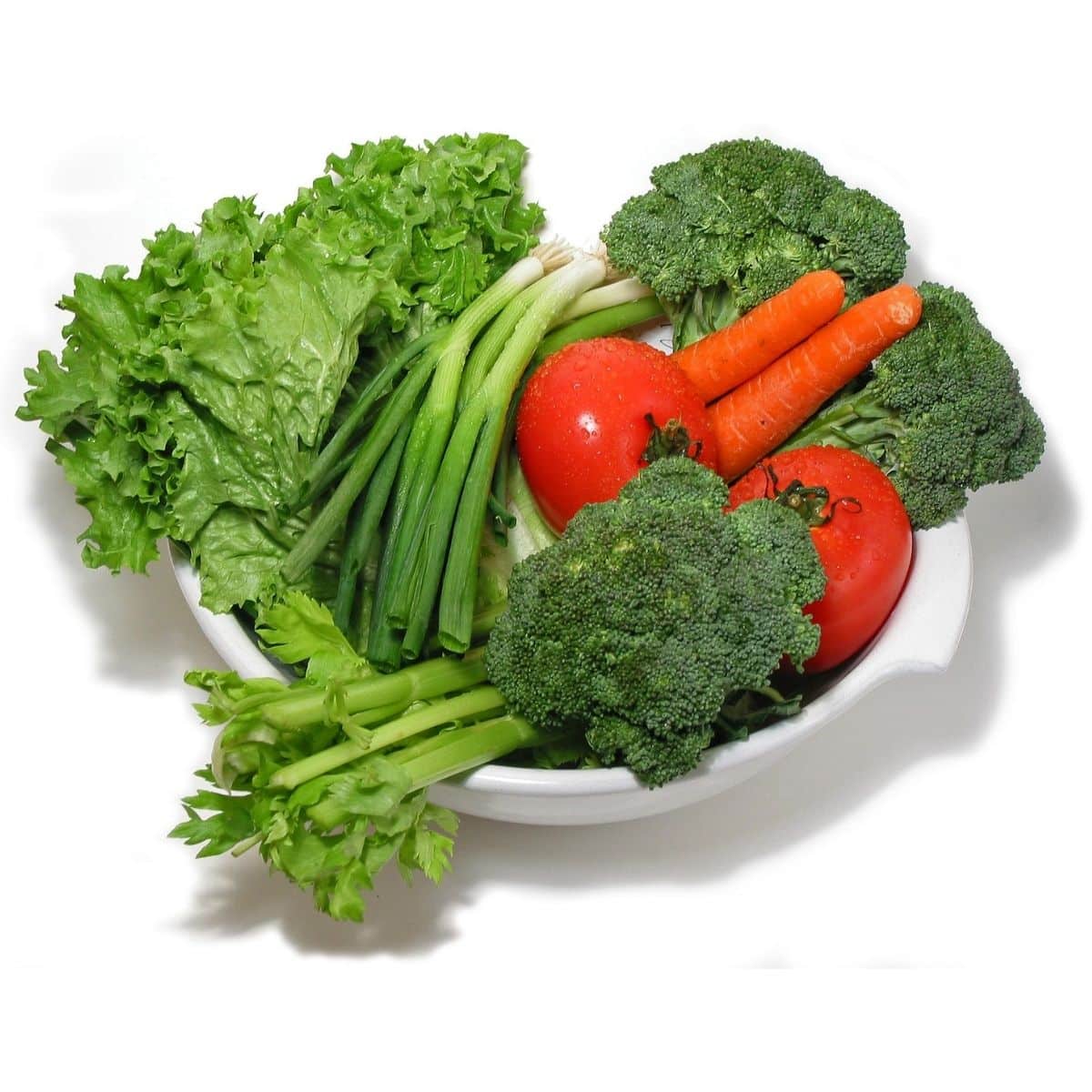
Dialysis patients are often overwhelmed by having to adjust to such stringent dietary rules, but being aware of the different food groups and understanding why certain items are off-limits can help them manage their condition better.
Here, we'll explain what dialysis patients need to know about dietary restrictions so they can be empowered to take charge of their health.
Jump to:
- Protein Intake
- Sodium Intake
- Potassium Intake
- Phosphorus Intake
- Fluid Intake
- Vitamin And Mineral Supplements
- Calcium Intake
- Choosing Foods
- Cooking Tips
- Eating Out Tips
- Managing Diet Restrictions Effectively
- FAQs for Dialysis Diet Restrictions
- With Good Planning, A Restricted Dialysis Diet Doesn’t Have To Be Limiting
Protein Intake
Let's talk about protein intake. We should cover the types of protein sources available, as well as how much protein we should be consuming.
It's important to make sure we're getting enough protein, as people with kidney disease on dialysis often have to supplement this macronutrient in their diet.
For More Recipes and Ideas --->> Get Your Free Meals and Recipes That Are Perfect for Pre-Dialysis Diets, Pre-Dialysis with Diabetes, or Dialysis Diets.
Protein Sources
Why low protein diet in kidney disease? Protein is an essential part of a dialysis diet. Choosing the right high quality protein sources and eating cleanly are key when following this restricted lifestyle. Reducing cravings for unhealthy snacks, portion control, and calorie counting will help you make sure that your intake is balanced and nutritious.
Low sodium snacks with good protein content like hard boiled eggs, Greek yogurt with fruit, hummus and veggies or almonds are great options for satisfying hunger without worrying about overdoing it on calories or salt. In general, the best sources include chicken, turkey, most seafood, fish, eggs and egg substitutes.
Eating these proteins in moderation as part of a healthy meal plan can give you all the nutrients needed while still managing symptoms from dialysis treatments. It's possible to maintain good health even under dietary restrictions.
By focusing on nutrient-dense whole foods, adding variety where possible, and staying mindful about what goes into your body, you'll have the best chance at success!
Protein Amounts
It's important to get the right amount of protein while following a dialysis diet, but that doesn't mean it has to be hard. Establishing good habits like portion control and reading food labels can help you stay on track when planning meals.
As a general guideline, the protein requirement for those on regular dialysis is 1.0–1.2 grams of protein per kilogram of body weight per day.
Generally, a high protein diet is among the current recommendations for hemodialysis patients and peritoneal dialysis patients. Eating balanced meals with plenty of protein as well as healthy carbohydrate sources will make sure that your body is getting everything it needs.
Meal timing and dietary planning are also essential for making sure each meal works together in harmony. You want to eat heart healthy lean proteins to improve your outcomes.
For a more accurate computation of how much protein is best for your specific condition, it is best to work with your health care provider, such as your doctor and renal dietitian.
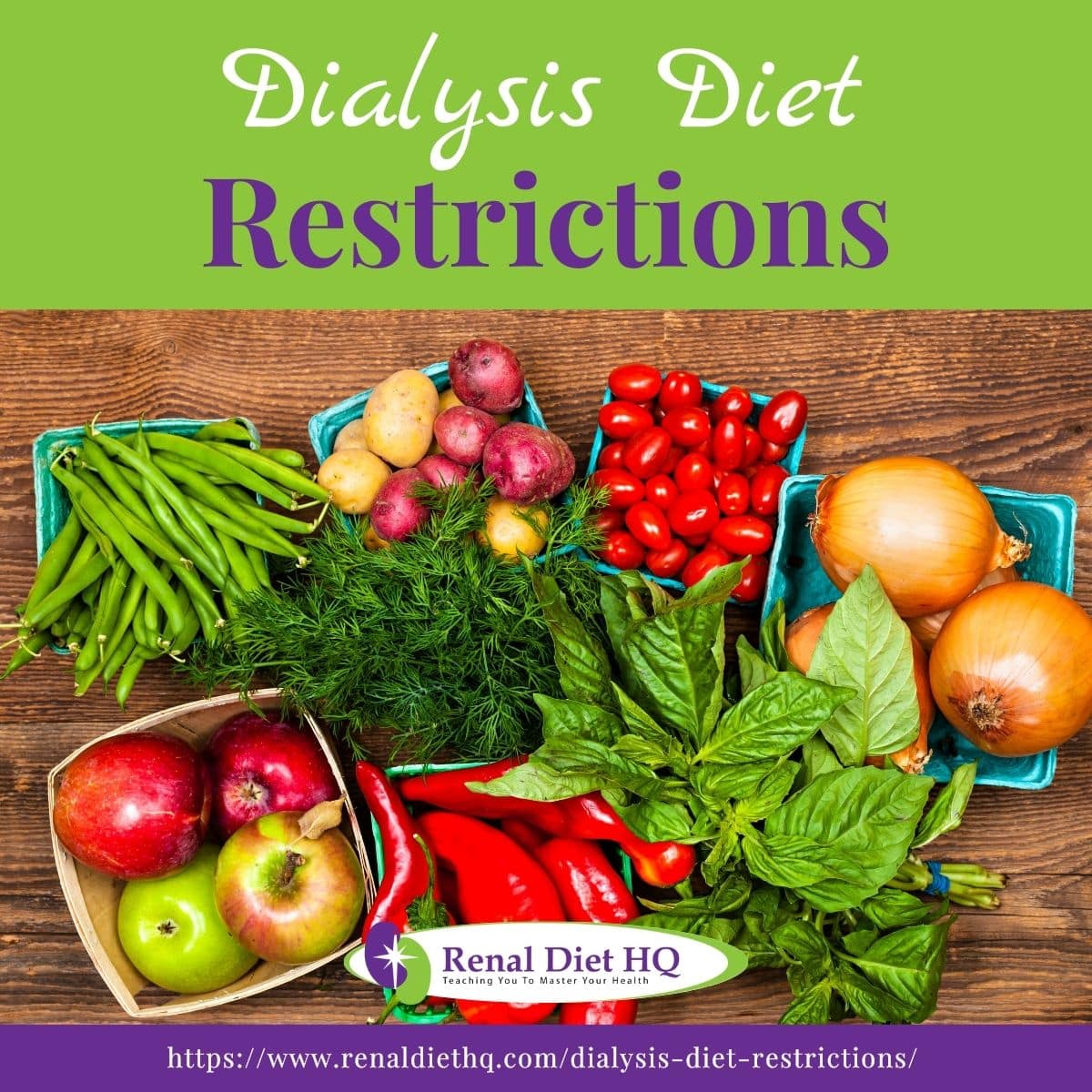
Sodium Intake
It's important to limit sodium intake, especially for those on dialysis. Sodium causes fluid retention and makes the time between visiting the dialysis units uncomfortable as well as making you thirsty even with a fluid restriction.
Some of the things patients on dialysis need to consider are as follows: Is there any alternative to sodium? What foods are high in sodium? Are there any benefits to reducing sodium intake? What other things can we use to replace sodium?
Sodium Content Of Foods
It's important to recognize the importance of monitoring amounts of salt consumed when it comes to diet restrictions in dialysis patients (renal diet sodium limit).
While we all need some sodium in our diets, too much can be detrimental for those with kidney issues. Understanding which foods are high and low in sodium is essential for maintaining a healthy level of consumption.
Sodium free snacks like fresh fruits, vegetables, and unsalted nuts also add variety to your kidney-friendly diet while keeping your meals low-salt.
Salt substitutes such as spices, herbs, and lemon juice can help you enhance dishes without adding too much sodium content.
Meanwhile, to avoid consuming higher levels of sodium, avoid anchovies, processed olives, and other cured meats and canned foods.
Ultimately, following the dietary recommendations set by your doctor will ensure that you maintain safe levels of sodium intake and stay on track with your dialysis treatment plan.
Salt Restriction
Dietary sodium restriction is essential for those on dialysis, and understanding how to do this can be tricky. For patients with end stage renal disease, it is important to keep your sodium intake at less than 2000 milligrams of sodium per day. To help stay within these levels, it’s important to read nutrition labels carefully when shopping so you know what exactly it is you're consuming.
Generally, the key is avoiding any added salt. Meal planning ahead of time also helps provide structure with meals throughout the week, allowing for better fluid and sodium balance.
Taking these steps can make a huge difference in maintaining healthy levels of sodium while still enjoying delicious foods!
Sodium Alternatives
Now that you know the importance of sodium intake and how to control it, let’s explore some alternatives for cutting back on salt. One great option is dairy substitutes like almond (renal diet milk) or soy milk which are naturally low in sodium and can be used just as regular cow's milk would be.
Low-salt recipes are also handy when trying to cut down on your amount of sodium without sacrificing flavor. Adding herbs and spices instead of too much salt will help enhance meals while avoiding excess sodium.
Sugar substitutes like stevia or monk fruit sweetener are a great way to satisfy cravings without overloading on sugar and salt. Avoid products like "lite salt" which is potassium chloride and can be a big source of potassium in your diet.
Lastly, diet sodas made with natural flavors rather than artificial ones give you an alternative to sugary drinks so you don't have to miss out!
With all these options available, there's no reason why eating healthy has to mean boring food - get creative and enjoy delicious meals at home!
Potassium Intake
Foods with high amounts of potassium like bananas, avocados, and potatoes can be problematic for patients with end stage kidney disease (avoid end stage renal disease) due to the limited ability of the kidney to regulate electrolytes.
It is important to know what other high potassium-content foods should be avoided.
Moreover, it's good to be aware of examples of low potassium foods that you can eat instead.
Recommended Intake Levels
Potassium is an important dietary mineral that must be carefully managed for maintenance dialysis patients.
To ensure proper intake levels, portion sizing and control, carbohydrate counting, food labeling, and balanced diet are all key factors to consider when planning meals and snacks.
When it comes to potassium intake specifically, there are current recommendations for consumption that should not be exceeded in order to prevent complications such as cardiac arrhythmia or hyperkalemia.
Generally, the limit of dietary potassium intake is at less than 2500 to 3000 milligrams per day.
It's important to pay attention to the sources of potassium that you consume, such as vegetables, dairy products, grains, and nuts - while keeping your portions reasonable.
By doing so, you can maintain a healthy balance of essential minerals like potassium in your body without putting yourself at risk for complications.
High Potassium Foods
It's important to know which foods are high in potassium, so that you can make sure to limit these foods in your renal diet.
High potassium fruits such as bananas, avocados, and oranges, vegetables like potatoes, spinach, and tomatoes, dairy products like yogurt and cheese, grains like quinoa and oats, nuts like almonds and walnuts, legumes such as beans and lentils, meats including beef and salmon, and other food items like cacao nibs and coconut water should be limited.
When it comes to meal planning or exchanging foods for substitutes with lower potassium amounts, portion sizes should be monitored closely to ensure the right amount of this mineral is being consumed.
Consulting with a renal dietitian can help you get started on a food plan that you can follow to make sure you don’t go beyond the current recommendations for the daily intake of potassium for dialysis patients.
Low Potassium Foods
It's also important to pay attention to low carb low potassium foods, because these alternatives will be better for dialysis patients.
Low potassium options are things like apples and pears, some leafy green vegetables such as lettuce and cabbage, white rice or pasta, mushrooms and squash; along with unsalted nuts and seeds.
It’s helpful to monitor portion sizes when it comes to meal planning, since these foods will still contain some potassium.
Reading the labels on packaged items is always beneficial – this will allow for accurate tracking of your intake. Keeping an eye out for these lower potassium alternatives can help keep your body healthy in the long run and away from complications.
Ultimately, being mindful of what goes into your kidney diet makes all the difference in terms of health outcomes.
Phosphorus Intake
People on dialysis have to be really careful about their daily dietary phosphorus intake, so it's important to understand where it's coming from.
It is also vital to know how much phosphorus is too much and the best way to stay within those limits. Let's start by talking about the different sources of phosphorus.
Phosphorus Sources
When it comes to dietary phosphorus restriction for maintenance dialysis patients, sources of phosphorus are important to consider so that you will know which foods to watch out for.
It's essential that we monitor our phosphorus balance levels as part of a healthy diet food plan as patients with end stage kidney disease have limited ability to remove this substance from the body.
The primary source of dietary phosphorus is found in proteins such as dairy products, legumes, nuts, eggs, fish and poultry. Plant-based proteins also contain phosphorus but at lower levels than animal proteins.
Dark unprocessed grains like oats (oatmeal and kidney disease), wheat germ, and bran can add an extra dose of this mineral too.
It's worth noting that some processed food items may have higher amounts of phosphorus additives which could throw off our daily balance if excessive consumption occurs. Be sure to check packaging labels before purchasing so you know how much to eat!
Daily Phosphorus Limits
Now that we know the sources of phosphorus and how to monitor our daily balance, let's talk about what the ideal daily limits should be. It all depends on your individual needs as well as fluid balance, hydration levels, portion control and other factors.
Generally speaking, a daily limit for those with kidney disease should not exceed 800-1000 mg per day - however if you are receiving dialysis treatments this may be adjusted accordingly. To ensure you stay within these guidelines it is important to pay attention to phosphorus sources in your diet.
As always, consulting with health care provider such as your doctor or nutritionist will provide more specific advice tailored to your situation.
By monitoring and adjusting where necessary, ensuring a balanced intake of phosphorus helps us maintain optimal health without compromising our wellbeing!
You can also check out these vegetables low in phosphorus and potassium.
Fluid Intake
For those at late stages of CKD and affected by kidney failure, avoiding excess fluid intake is important for those on a following a pre-dialysis renal diet. So, how much water should we be drinking?
We should also discuss if there are any negative effects of drinking too much water.
Staying hydrated is an important part of a dialysis diet. It's essential for maintaining overall health and well-being, but it can be tricky to manage fluid intake on a regular basis.
Dialysis patients are prone to fluid retention due to the limited ability of diseased kidneys to filter out water. Luckily, you can still do proper portion control, which is key in limiting fluids while still staying hydrated.
Making lifestyle changes such as eating healthy, low-water content snacks and regularly monitoring and tracking your own fluid management are great ways to ensure that you stay within the recommended daily limits set by your health care provider.
Additionally, adjusting your eating habits can help keep tabs on how much liquid you consume during meals so that you never exceed what’s necessary for optimum health.
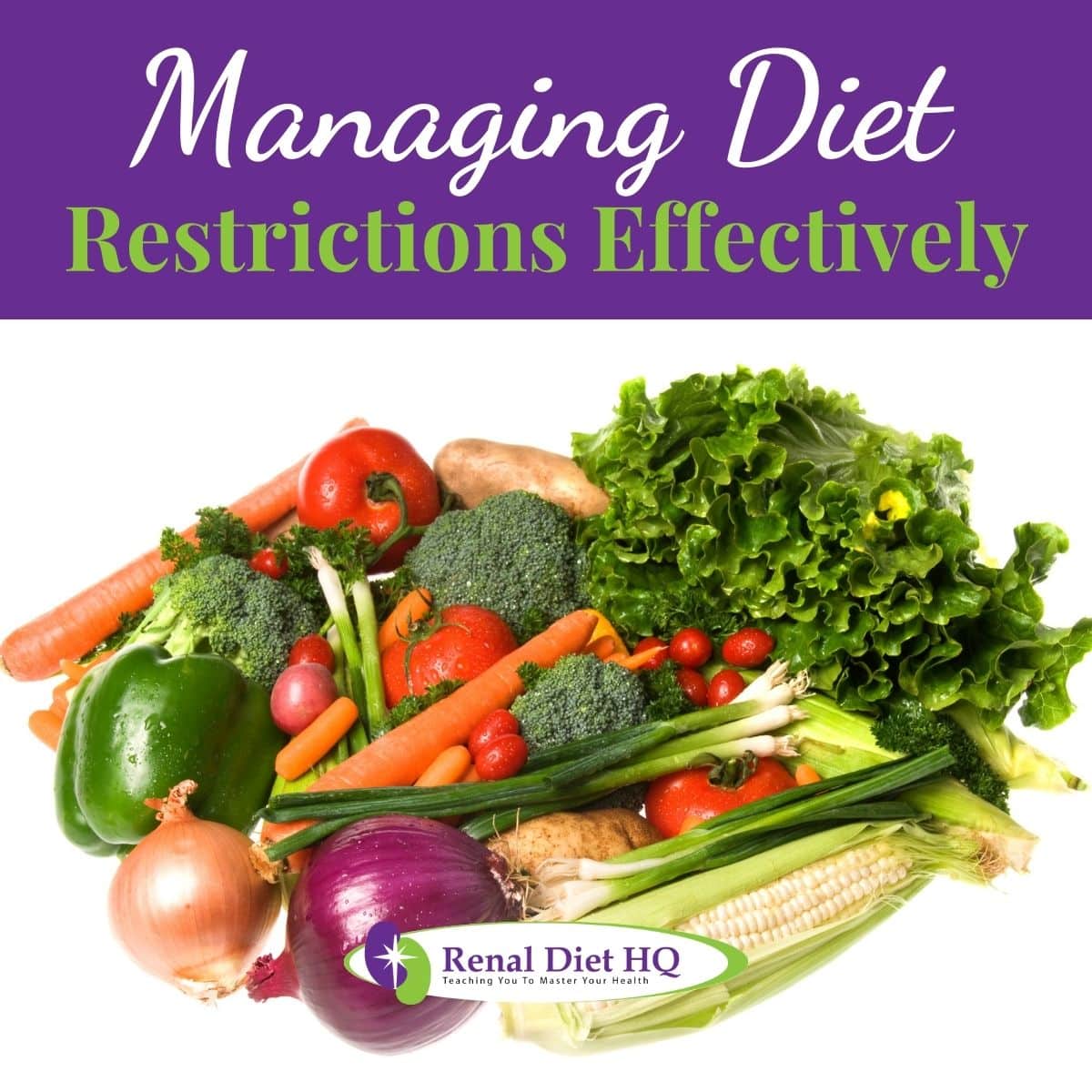
Vitamin And Mineral Supplements
To stay healthy, it's also important to be mindful of vitamin and mineral supplements that may be needed in your daily food plan.
A balanced diet can help you obtain all the vitamins and minerals you need. Portion control is key when it comes to micronutrient sources like vitamins and minerals. It can be easy to over- or under-consume these nutrients with meals, so double check food labels for accurate portion sizes.
If certain vitamins or minerals are not achieved in your diet, then supplementation may be needed. There are plenty of vitamin and mineral supplements sold on the market.
Before adding any multivitamin in your daily regimen, make sure to consult your doctor first to make sure it is safe, as well as to be able to maximize your benefits from these products.
Calcium Intake
Calcium levels for CKD patients on dialysis must be maintained between 8.5 to 10.2 mg/dL.
One way to start is by familiarizing yourself with specific calcium requirements recommended by your doctor. You can also check out these recipes for dialysis patients.
It’s important to understand that not all sources of calcium are created equal—some may be more difficult for a person on dialysis to absorb or metabolize than others.
For instance, dairy products contain large amounts of calcium, but also phosphorus which could lead to higher levels in the body if consumed in excess.
To ensure adequate absorption of this mineral, while avoiding potential side effects such as hyperphosphatemia and bone loss.
It's essential to find alternative ways to get enough calcium each day from fortified juices or cereals and other non-dairy calcium rich foods such as leafy green vegetables and nuts. In some cases, supplementation is often necessary.
Rather than relying solely on traditional nutritional advice for people without kidney disease, work closely with a registered dietician who specializes in renal nutrition therapy to develop meal plans tailored specifically for your health condition.
They can provide helpful tips about reading ingredient lists when selecting store-bought items; how much supplemental vitamins and minerals you need based on your bloodwork results; using special renal cookbooks (dialysis cookbook) or apps; and incorporating nutrient-rich ingredients into everyday dishes at home.
Taking these steps now can help make sure you're getting the right amount of calcium day after day - no matter where life takes you!
Choosing Foods
Now, let’s talk about choosing foods for advanced kidney disease following a dialysis diet, specifically high protein foods, low potassium foods, and low phosphorus foods.
When picking high protein foods, try to focus on lean meats and fish, as well as dairy and eggs. For low potassium foods, look for fresh vegetables and fruits like apples, oranges, and grapes.
Lastly, low phosphorus foods include grains, pasta, and legumes, like lentils and beans. So, high protein, low potassium, and low phosphorus foods are great for a dialysis diet. Let's discuss each one in more detail.
High Protein Foods
When it comes to dialysis diets and choosing foods, high protein is key. Lean meat, fish, and egg whites are among the best protein sources for dialysis patients.
Non-meat alternatives such as plant-based proteins can also be a great way to ensure you're getting the necessary amounts of protein with fewer restrictions or dietary limitations.
Try snacking on healthy protein rich items like nuts, seeds, yogurt, cheese sticks, and hummus throughout the day. This will help keep your calorie in check while still maintaining those all important levels of nutrients.
Low Potassium Foods
Shopping lists are an excellent way to keep track of what you need for a healthy low potassium diet for kidney disease.
Look for items such as fruits like strawberries (are strawberries kidney friendly) or apples, vegetables like celery or green beans, grains like oats or couscous and dairy products like plain yogurt or nonfat milk.
When it comes to portion sizes, aim for half your plate filled with vegetables - this is a great way to ensure you're getting enough fiber while still keeping those all important levels of nutrients in check.
Make sure to read nutrition labels for prepared items you buy and ensure that you are only eating by the recommended serving size.
Low Phosphorus Foods
Low fat dairy, healthy grains, processed meats, sugar substitutes, and sugar free beverages are all top choices when it comes to keeping these levels balanced.
Red meats (low phosphorus meats) can be high in phosphorus, so try to go for leaner varieties like turkey or chicken breast whenever possible.
Whole grain breads and pastas are much healthier than their refined counterparts; they contain more fiber which helps regulate digestion while still providing essential nutrients.
If you're looking for something sweet without all the added sugar, reach for naturally-sweetened options like stevia (is stevia bad for kidneys) or monk fruit extract as alternatives, and stay away from dark-colored sodas.
Cooking Tips
While avoiding certain foods, there are still plenty of delicious and healthy food options to enjoy. Cooking your own meals is an enjoyable way to maintain a balanced diet with dialysis restrictions in mind. Here are some useful tips when it comes to preparing your own food.
When it comes to grilling (grilling blood pressure), make sure to preheat the grill before adding food, clean the grate after each use, and marinate meats for added flavor without too much sodium or potassium.
Another helpful cooking tip is to do meal planning. This can also be beneficial for creating sustainable eating habits that fit within dialysis dietary guidelines. Dedicate time once per week to plan out nutritious meals and snacks that adhere to your meal plan while still being flavorful and satisfying.
Portion control is key when it comes to maintaining a balanced diet as well, and planning your meals ahead of time can help you achieve better portion control.
When shopping for ingredients or prepared items, make sure you’re reading food labels carefully so you know exactly what’s in your food items and how much of them you should eat at one time.
Having quick snack ideas on hand will help keep you energized throughout the day while adhering to dietary regulations.
Some snack choices might include fruits and vegetables like apples, carrots, celery sticks, cucumbers, grapes, oranges, or snap peas - just remember not to add any dips! You can cut and prepare these snacks on your own as part of meal prep.
Low-fat string cheese with whole wheat crackers or hummus and pita bread can offer a tasty treat during mid-day cravings as well. With these cooking tips, meal planning strategies, and snack ideas in mind, having diet restrictions in dialysis patients cannot stop them create delicious dishes that satisfy their taste buds!
Eating Out Tips
Planning and prepping are paramount when it comes to eating out while adhering to a dialysis diet.
From finding healthy restaurant food to mastering portion control, careful consideration is key for any diner with dietary restrictions.
The first step should always be researching the restaurant before stepping foot in its doors. Is it known for serving nutritious dishes?
If not, read up on food labels so you can make an informed decision about what’s safe and suitable for your consumption.
Additionally, ask the staff if they can accommodate your dietary restrictions. You can avoid kidney failure with dietary changes.
Finally, don’t let yourself feel limited or discouraged by your unique diet—there are plenty of alternative options! Ask questions if necessary and take advantage of special requests; chefs will typically try their best to accommodate health requirements without sacrificing flavor.
Whether dining alone or with friends, remember that there are ways to enjoy a delicious and balanced meal no matter where you go.
Managing Diet Restrictions Effectively
Having a dialysis diet plan that is tailored to your needs and lifestyle can be very beneficial in managing food restrictions effectively. You can figure out all about healthy eating with a dialysis diet plan.
Eating a balanced, nutrient-rich diet with portion control (portion control for CKD patients) can help you feel better and stay healthy while on dialysis. Here are some tips to keep in mind when following a restricted diet:
- Incorporate low sugar snacks into your meals throughout the day - this will help manage hunger levels and cravings.
- Practice mindful eating by slowing down and savoring each bite of food as it passes through your mouth. This helps increase awareness of how much you’re actually consuming at each meal or snack.
- Focus on adding healthy fats such as nuts, seeds, avocados, olive oil, etc., which provide essential fatty acids for optimal health benefits during dialysis treatment.
- Make sure to drink enough fluids within your restriction recommendation
A well-planned diet including portion control along with mindful eating habits can make all the difference in achieving success with diet restrictions related to kidney disease and dialysis treatment plans.
To help you have a better dialysis diet plan tailored for you, consult with a dialysis dietician who can guide you with every restriction that you have to keep in mind.
With these strategies combined with good self-care practices, living with dietary restrictions doesn’t have to be so difficult; instead it could become an opportunity for improving your nutrition and overall quality of life!
FAQs for Dialysis Diet Restrictions
Eating habits, salt intake, fluid limits, and phosphorus levels are all factors that can have long-term health effects on someone who follows a dialysis diet.
Potassium intake is particularly important to regulate as an imbalance of this mineral in the body can lead to serious medical complications such as heart arrhythmia or muscle weakness.
The right kidney-friendly diet can also keep blood pressure levels normal. If the dialysis diet is incorporated with a diabetic diet, diabetic dialysis patients can also have better control o their blood sugar levels.
To maximize these benefits, it's essential for those with kidney disease to closely monitor their eating patterns, ensuring they consume enough nutrients while adhering to their doctor's recommended restrictions.
Overall, eating a proper dialysis diet (dialysis diet guidelines) can help improve dialysis patient outcomes, prevent adverse events, improve survival, and help you feel at your best even when undergoing regular dialysis treatment sessions.
If you are already on dialysis, focus on mineral intake, fluid balance, vitamin supplementation, and modifications as instructed by your physician. Taking care of these areas can improve protein intake and avoid complications, which is key in managing health issues that require dialysis treatments.
If managed correctly, with the help of a professional dietitian or physician, you could potentially lessen the number of times you have to go through this grueling process per week.
With just a few changes to your diet and lifestyle habits, reducing the need for dialysis might become a reality.
It is important to consult with your doctor first before starting with nutritional supplements, since a lot of individual factors must be accounted for.
Pregnant dialysis patients must plan ahead to ensure they are meeting their nutritional needs while reducing the risk of complications. It's important for pregnant women on dialysis to monitor protein and sodium intake, manage hydration levels, maintain a healthy weight, and reduce stress.
Working with your doctor or dietitian can help you create meal plans that meet these goals in order to have a successful pregnancy.
Eating smaller meals throughout the day instead of three large ones can also be beneficial for monitoring nutrient consumption and avoiding nausea.
Eating a balanced kidney diet is possible for dialysis patients, even in the face of restrictions. It's important to avoid dehydration by drinking enough water without consuming extra fluid, and choosing healthy kidney friendly snacks like fruits and vegetables that are lower in potassium.
Reducing your salt intake also helps manage potassium levels, as well as eating smaller portions more frequently. Moreover, eating plenty of high-quality protein is also crucial as this can be lost during dialysis treatments. With these tips, you can still enjoy nutritious meals while on dialysis.
Here is a small example of foods that most people on dialysis can eat:
1. Carbohydrates: Cream of Rice cereal, most white bread, wheat bread, or whole-grain bread, and bagels, low sodium corn chips, unsalted pretzels, puffed rice cereal, English muffins, white pastas, and rice (brown or white).
2. Proteins: Chicken, turkey, most seafood, fish, eggs and egg substitutes.
3. Fruits: Fresh fruit produce like apples, grapes, canned peaches and pears, lemons, and pretty much any kind of berry.
4. Vegetables: Cabbage, cauliflower, carrots, garlic, onion, mushrooms, peas, zucchini, winter squash, green beans, bell peppers (green, red, yellow), jalapeno peppers, and eggplant.
5. Beverages: Water, cranberry juice, clear sodas, lemonade, root beer, ginger ale, and tea.
6. Fats: Use non dairy alternatives such as non dairy creamers, nut milks, etc. Olive oil is the best fat to use when cooking and offers good flavor to recipes. Mayonnaise and low sodium dressings are okay, as is a small amount of butter or margarine.
All of these and more are foods that you can build each meal with. There are plenty more foods out there that are safe and beneficial for kidney disease patients undergoing dialysis treatment sessions, too.
Do keep in mind fluid restrictions. Especially if the patient's doctor has put them on a very strict fluid restriction, even the foods that the patient eats can count towards fluid intake.
With Good Planning, A Restricted Dialysis Diet Doesn’t Have To Be Limiting
Dialysis is an important part of a patient's health care, and their renal diet must be tailored to meet their individual needs. For those on dialysis, it can be difficult to find the right balance between maintaining good nutritional status and managing dietary restrictions.
Fortunately, there are ways for these patients to make sure they're taking in enough nutrients without compromising their health or lifestyle. By finding out what works best for them, dialysis patients can enjoy life while still making sure they stick to the necessary dietary changes.
Ultimately, with careful planning and communication with health professionals, dialysis patients (recipes for dialysis patients) can ensure that they get all the nutrition they need while enjoying meals that fit into their own preferences and tastes.


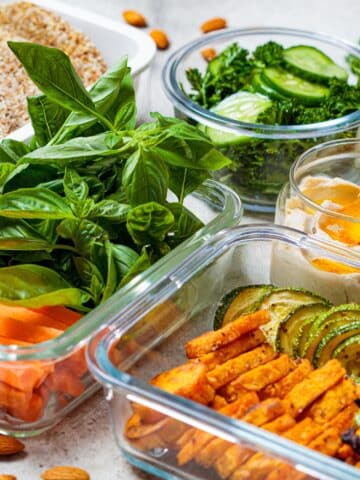
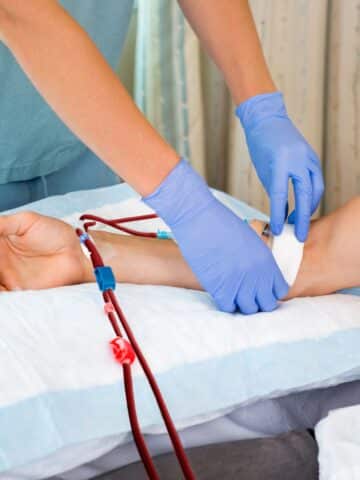
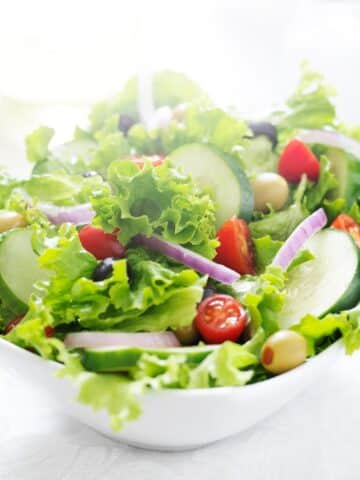
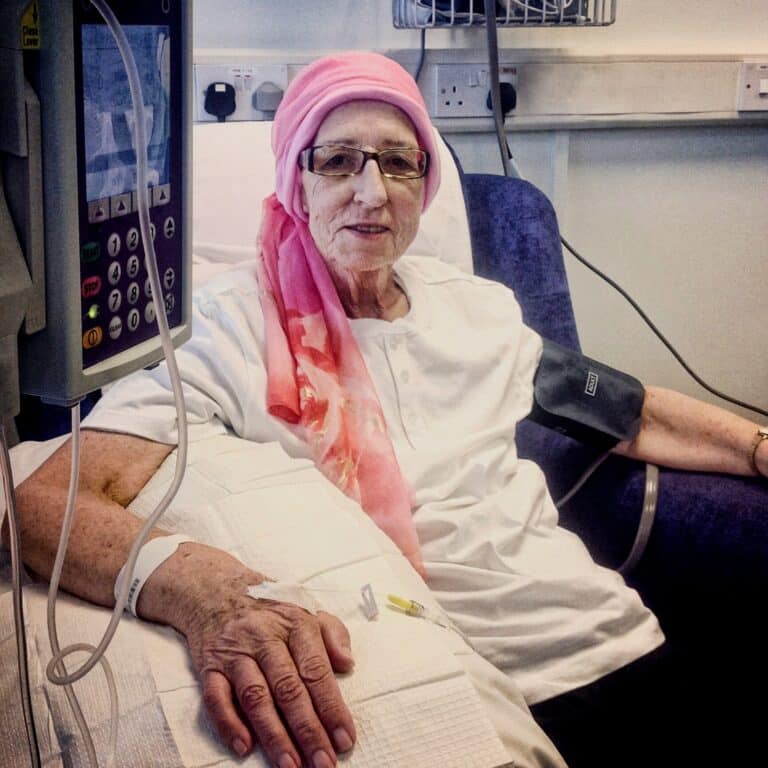
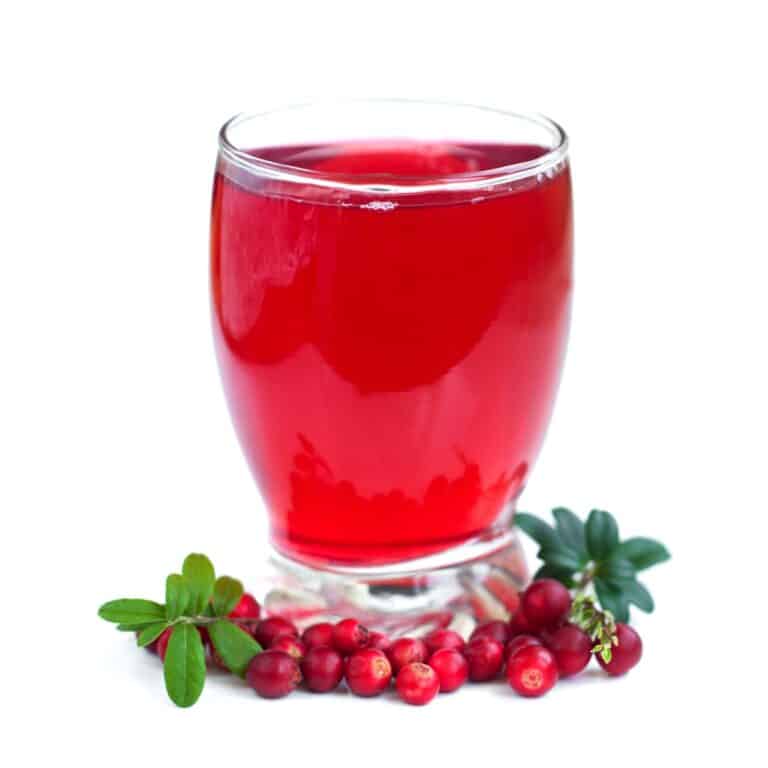
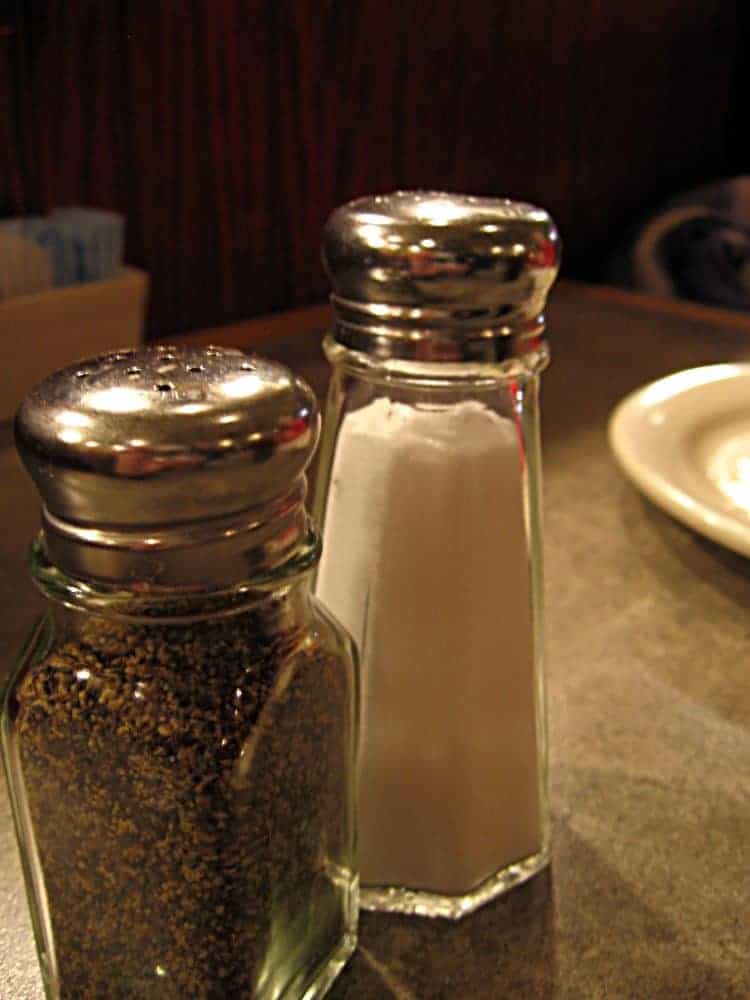

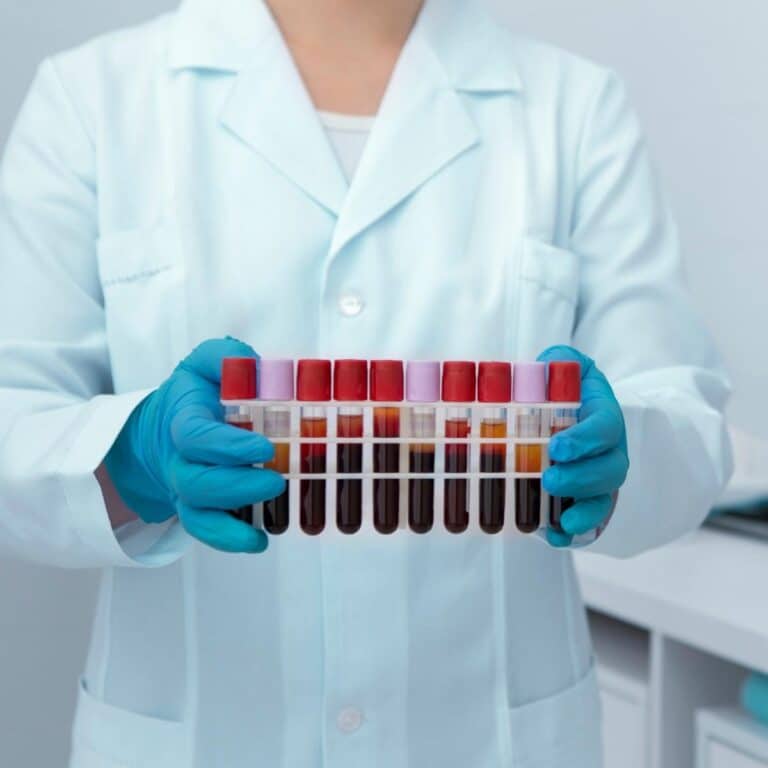
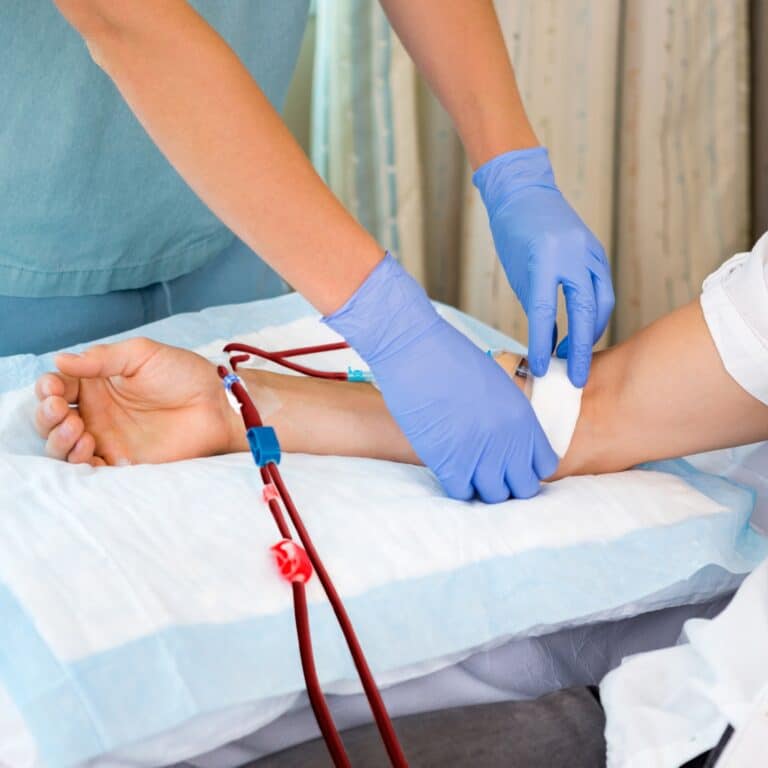





My husband just started dyalysis and trying to come up with ideas that will work for him is overwhelming me.